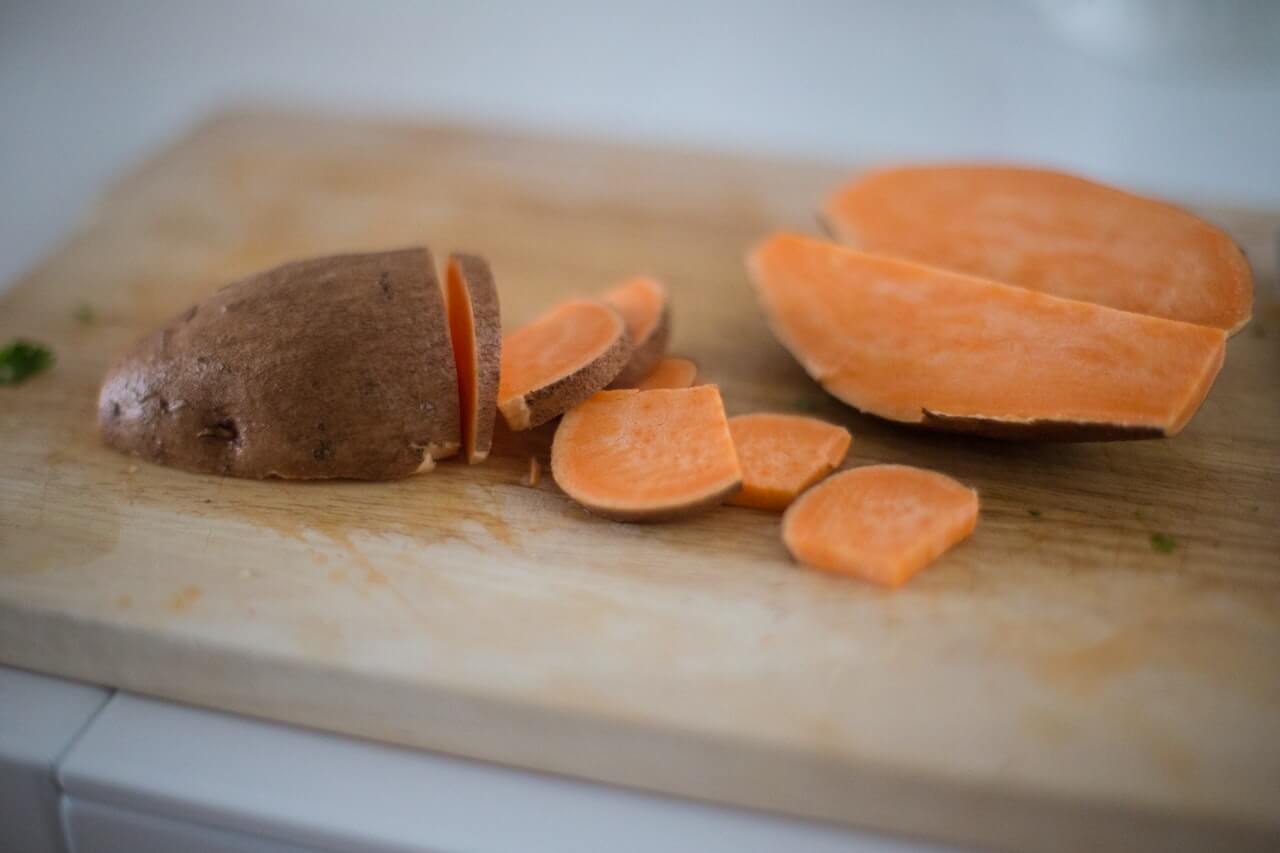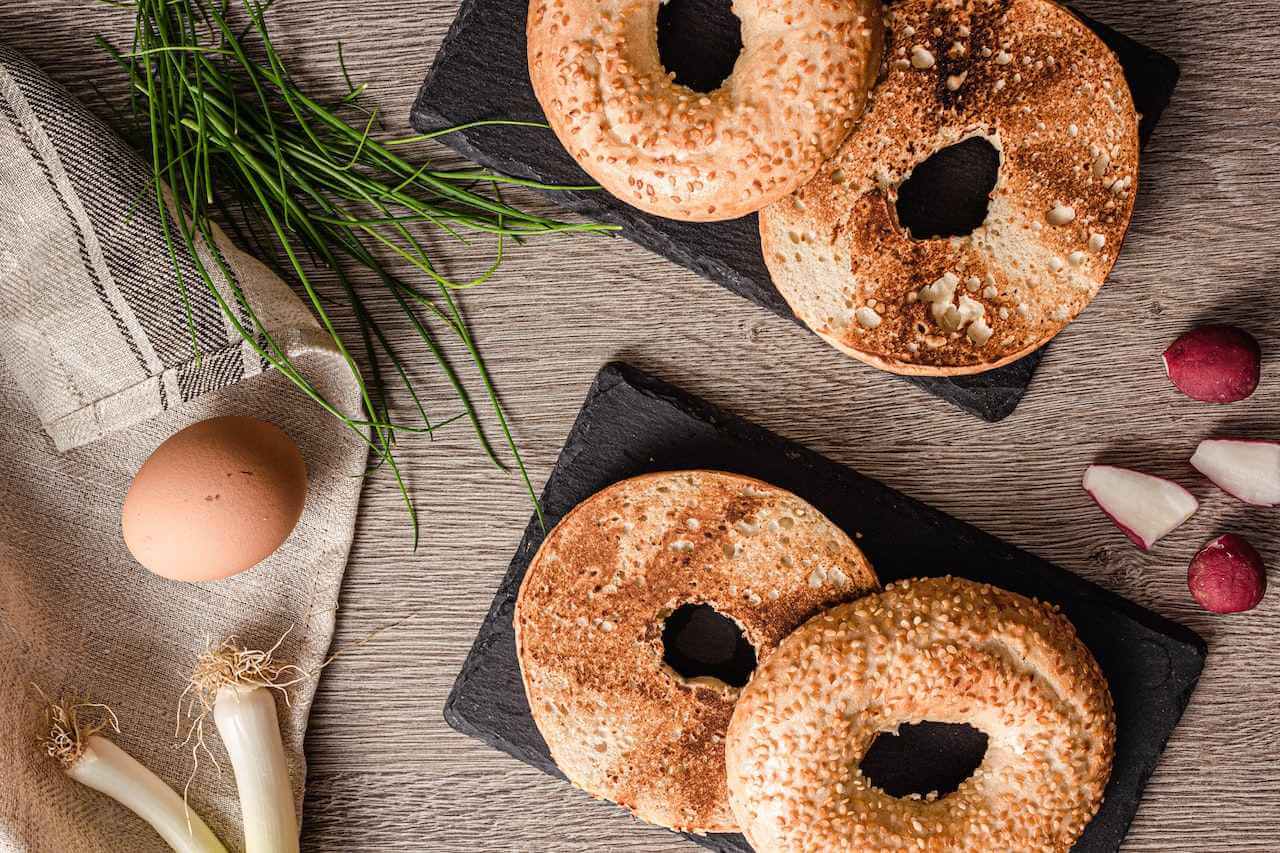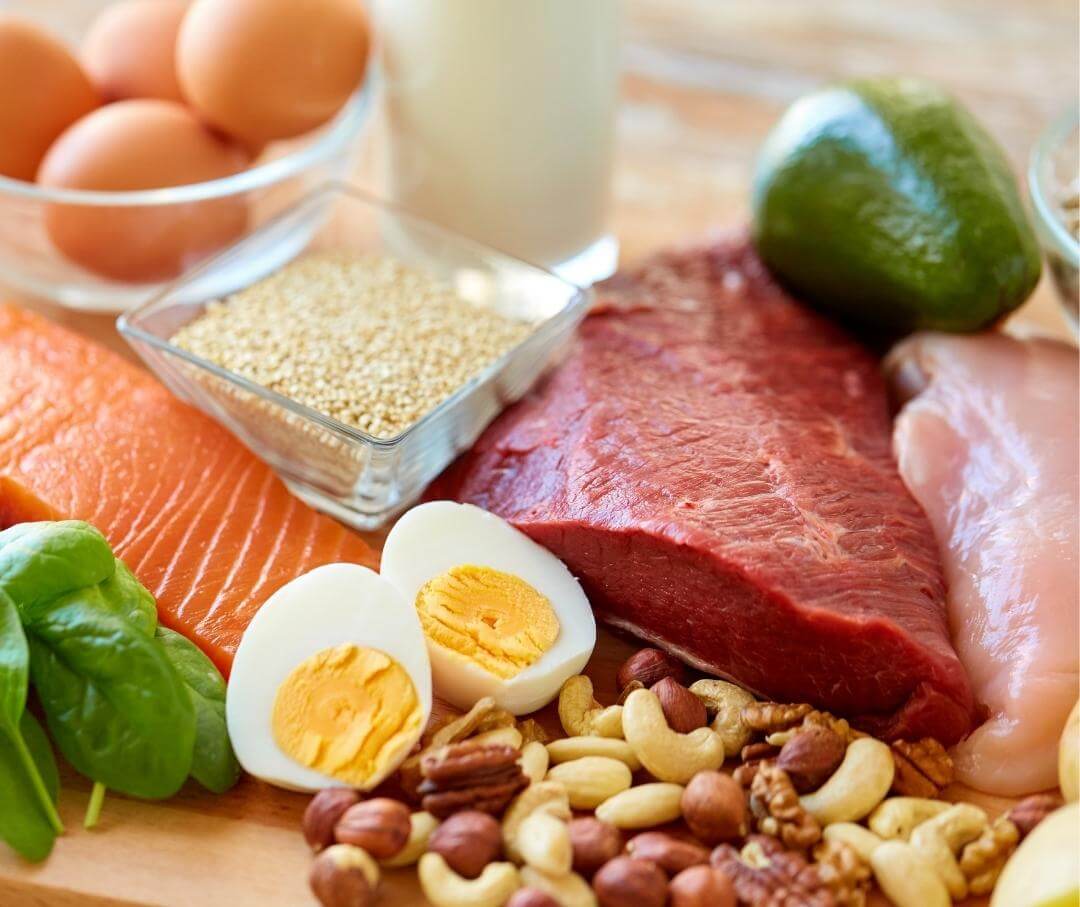There’s a misconception that carbohydrates are all the same and are bad for you. Labeling a nutrient as bad makes it easier for the diet and wellness industry to sell weight-loss solutions, but it isn’t the truth. Carbohydrates are split into two nutrients that are both healthy in proper portion sizes.
Check out how fast and slow carbs work in your body to better understand what you need to thrive. You can tailor your diet to your health needs and enjoy your favorite carbohydrate-heavy foods.
What Are Fast-Digesting Carbs?
When people refer to fast-digesting carbs, they may also call them simple carbs. They’re non-complex carbohydrates the body can absorb quickly instead of working on them in your digestive tract.
After eating simple carbs, you’ll cause a spike in your blood sugar and gain an energy boost when they reach your bloodstream. You can find them in any of the following forms.
{{mid-cta}}
Types of Fast-Digesting Carbs
Any food containing fast-digesting carbs will have one or both forms: monosaccharides and disaccharides.1 These are the benefits and breakdowns of the two sugar molecules.
Monosaccharides
Carbohydrates contain monosaccharides because they’re simple sugars. You'll get three types of monosaccharides depending on whether you’re eating fruits, vegetables, or dairy products.
Glucose
You’ll find glucose in plants like vegetables and fruits. The body uses it to fuel the brain and bodily functions, so it’s an integral part of a comprehensive nutritional plan.2
When eating organic glucose-containing foods, you may also increase your fiber intake with helpful fruits like raspberries, blueberries, and coconuts. However, foods containing dextrose, a similar sugar, may be less nutritious because dextrose is a processed sweetener.
Fructose
Fructose is another natural sugar in fruits and vegetables, but you can also eat more than you intend if you incorporate items like honey and bread into your diet. Along with providing fructose-powered energy to your body, fiber-rich foods like bread regulate your digestive system for optimal nutrient absorption.3
Galactose
Fast-digesting carbohydrates may contain galactose if they come from dairy products. Galactose only comes from lactose, which is in milk. The sugar supports your metabolism and the biosynthesis of other macromolecules.3,4
Disaccharides
When people eat more quick-digesting carbs, they knowingly or unknowingly consume more disaccharides. This monosaccharide contain two simple sugars that can result in one of these three disaccharide types.5
Sucrose
White table sugar is one of the more commonly found versions of sucrose. It’s white and grainy but can turn into a powder. You’ll also find sucrose in natural foods like sugar beet and sugar cane.
Lactose
Fast carbs also include lactose. This organic disaccharide comes from milk, so you’ll find it in milk-based products.
Maltose
When glucose goes through the malting process, it becomes maltose. Malting requires germination, so you’ll find maltose in products with germinated grains, like malted beverages or barley.6
Fast-Digesting Carbs vs. Slow-Digesting Carbs
Fast-digesting carbs like those above will easily integrate into your bloodstream. Slow-digesting carbohydrates are more complex, so the body needs to work on them longer in the digestive tract before they reach your bloodstream.
These are the primary differences everyone should know when learning about fast or slow-digesting carbs:
- Simple carbs: Provide quick bursts of energy
- Slow carbs: Make you feel fuller for longer
- Simple carbs: Spike the blood sugar
- Slow carbs: Affect your blood sugar levels gradually
Fast-Digesting Carbs and the Glycemic Index
You can measure how carbs affect your body by monitoring the glycemic index and load readings. The glycemic index classifies foods based on how each food’s carbohydrates will affect your blood sugar.7
A glycemic load reading predicts how your body will react to specific carbs. It combines traditional glycemic index readings with the exact amount of carbs in your serving of food to calculate how fast your blood sugar levels will rise and where they will peak.7
Quick-digesting carbs (e.g., foods containing dextrose or glucose) will immediately affect your blood sugar, creating a spike. While that spike remains, your body will turn those carbohydrate sugars into glycogen stores for future energy use.8 This effect normally makes fast-digesting carbs classified as high-glycemic foods.
Even with these rating systems, fast carbs aren’t all the same. They’ll have different glycemic impacts based on the types of sugars they contain and the number of carbs in a food.
How Do Fast-Digesting Carbs Benefit the Body?
The primary benefit of fast-digesting carbs occurs in the metabolic pathway. This pathway is a comprehensive term that includes all chemical reactions within a living organism.9 When the pathway in a chemical reaction functions effectively, it creates a product or reactant necessary for bodily functions.
Simple carbs support this pathway. They raise your blood sugar levels and feed metabolic pathway reactions by integrating directly into your bloodstream without a complex digestive process.
Complex carbs also help your metabolic pathways. After spending time in your digestive tract, the dismantled carb sugars reach your bloodstream and support metabolic pathways in places like your muscles. This is why people may eat carbs after a workout. The healthy carbs feed the muscle repair process and the metabolic fat burning caused by exercising.10
In general, carbohydrates are an excellent source of energy. Without them, vital functions like metabolism and muscle tissue regeneration wouldn’t be as effective. It’s why even when people try to lose weight, sustainable diets include healthy carbs to fuel the body as it works through glycogen stores.
When Should You Eat Fast-Digesting Carbs?
Consider eating fast-digesting carbs in the morning to time your carb intake for optimal digestion, weight loss, or muscle building. Your fast-carb meal will also regulate hormone production more effectively when consumed before your day begins.11 Hormones influence how your body controls your blood pressure and even your sleep cycle, so it’s a crucial part of a healthy lifestyle.12,13
You can also consume fast carbs after a workout. They provide these benefits when timed with your preferred exercise routine.
Fast Carbs After a Workout
When you eat simple carbs after an intense workout, your metabolism burns through them faster because exercising makes it more efficient.14 The body needs simple carbs after intense exercise because it burns through your glycogen stores as you work out.15
If you don’t have any glycogen stores, you’ll experience intense fatigue, and your muscles won’t be able to repair themselves.16 Eating carbs also replenishes lost glycogen and drives recovery nutrients, such as creatine and amino acids, so your body thrives after a workout.

When Not to Eat Fast-Digesting Carbs
Occasionally, you should eat slow-digesting carbs instead of fast carbs. If you haven’t been working out and eating fast carbs, the blood sugar spike, and excess glucose will create new fat tissue storage deposits, leading to possible weight gain.2 It would work against any existing weight loss plans or recommendations from your doctor.
Fast-acting carbs may also not be the right carbohydrate to eat frequently if you’re at risk of heart disease or diabetes. Fatty artery deposits built over time with blood sugar spikes can trigger atherosclerosis or make your body less insulin resistant and cause diabetes.17,18
Simple vs. Slow Carbs: Which Are Better for Weight Loss and Management?
Given that blood sugar spikes caused by simple carbs can lead to new fat deposits, they aren’t good to eat in large amounts if you’re working toward weight loss or weight management. Slow carbs are a healthier alternative because the body takes longer to break them down, which is gentler on blood sugar levels.
Fast-burning carbs immediately affect your blood sugar, but complex carbs integrate into your bloodstream slowly. They won’t lead to new fat deposits in your tissues unless you eat large portions.
10 Good Quick-Digesting Carbs You Can Eat
Consider these options when adding healthy fast-digesting carbs to your diet. A nutritionist or registered dietitian can help you make a meal plan that implements these foods at the most optimal times for your health goals.
Bananas
You can always grab a banana to up your carb intake after a workout. The healthy starch quickly absorbs into your bloodstream, offering other health benefits. If you vary your intake by eating green bananas, the starch won’t turn into sugar because green bananas break down into butyrate, which improves your gut’s microbiome.
Grapes
Visit your grocery store’s produce section to get the fast-acting carbs in grapes. Whatever kind you enjoy most, your body will gain extra energy from the easily-absorbed carbs in each bite.
Watermelon
Watermelon contains many natural sugars, which makes it a fast-carb food. Add a slice or two to your pre-workout snack to boost your hydration and carb intake.
Sweet Potato
Eating a sweet potato by itself is a slow-digesting carb that’s low on the glycemic index. However, you can add other foods to make it a faster carb, like sour cream or cheese.

Starchy Vegetables
You’ll find every type of carbohydrate in starchy vegetables. Beetroots, peas, and sweet corn will provide instant sugars for your bloodstream. They’re also organic foods that provide other essential nutrients your body might need if you’ve been eating a highly processed diet for some time.
Bagels and Crackers
Any bagels and crackers made with white flour will be a fast-digesting carb source. If you swap them with alternatives made with whole grains, they’ll become complex carbs that are more gentle on your blood sugar.
Lemonade
Homemade or store-bought lemonade will likely contain natural and processed sugars to make the sweet drink extra delicious. You can enjoy it when you need a quick energy boost, but the fast-burning carbs in organic lemon juice can also mitigate your blood sugar response to bread when eaten together.19 Pairing the two makes it easier for your body to digest them without a high glycemic response.
White Bread
White flour in bread will immediately affect your blood sugar. It absorbs quickly and refills glycogen stores immediately, so time your white bread consumption with post-workout snacks if you want to lose weight or build muscle.
White Rice
Long or short-grain white rice is another fast-absorbing carb many will already have at home. Enjoy a small amount with breakfast or after a workout to enjoy the health benefits of fast carbs. You can also opt for rice made with whole grains to reduce your blood sugar spikes to lose weight or prevent diabetes.
Baked Potato
Fast carbs can be extra delicious, like a baked potato smothered in butter. It has nearly the same blood sugar effect as couscous because they’re both fast-digesting carbs.
How to Choose the Right Fast-Acting Carbs
When you want to choose fast-digesting carbs to increase your blood glucose and benefit your body, consider these factors before adding anything to your diet:
- Your existing food allergies, sensitivities, and preferences
- Any recommendations provided by your doctor or nutritionist
- Your primary healthy goals, such as gaining muscle
- Your existing diet, which may already contain fast-acting carbs that you can move to more optimally timed meals and snacks
Remember, fast-digesting carbs should cause temporary, manageable blood sugar spikes. The boost restocks your glucose stores, but it shouldn’t cause adverse health effects like the symptoms of hyperglycemia. If you experience these symptoms recurrently after eating fast carbs, see a health provider right away:20
- Lethargy
- Frequent urination
- Dry mouth
- Blurred vision
- Unintentional weight loss
Learn More About Healthy Nutrition With Signos’ Expert Advice
You can use fast-absorbing carbs to accomplish your health goals. Talk with your doctor or a nutritionist to decide which simple carbs are best for your health and routine. They could help you improve your overall health and well-being now that you know how they work.
Signos’ experts are also here to help. We provide other healthy habits through frequent blog posts and can assist your health journey with glucose monitoring. The quick Signos quiz will help you figure out if the program is a good fit for your needs. Spend a few minutes answering personalized questions to take the next step toward comprehensive wellness.
- Item 1
- Item 2
- item 3
Topics discussed in this article:
References
- Holesh, J. E., Aslam, S., & Martin, A. (2022, July 25). Physiology, Carbohydrates. National Center for Biotechnology Information. Retrieved May 3, 2023, from https://www.ncbi.nlm.nih.gov/books/NBK459280/
- Hantzidiamantis, P. J., & Lappin, S. L. (2022, September 19). Physiology, Glucose. National Center for Biotechnology Information. Retrieved May 3, 2023, from https://pubmed.ncbi.nlm.nih.gov/31424785/
- (2021, February 17). Health Benefits of Bread. Gold Medal Bakery. Retrieved May 3, 2023, from https://www.goldmedalbakery.com/blog/health-benefits-of-bread/
- Williams, C. A. (n.d.). Galactose. Galactose - An Overview. Retrieved May 3, 2023, from https://www.sciencedirect.com/topics/agricultural-and-biological-sciences/galactose
- Stylianopoulos, C. (n.d.). Disaccharide. Disaccharide - an Overview. Retrieved May 3, 2023, from https://www.sciencedirect.com/topics/nursing-and-health-professions/disaccharide
- Vinje, M., Henson, C., & Duke, S. (2021, July 15). Description and functional analysis of the transcriptome from Malting Barley. Science Direct. Retrieved May 3, 2023, from https://www.sciencedirect.com/science/article/pii/S0888754321002895
- Atkinson, F., Brand-Miller, J., & Foster-Powell, K. (2023, January 21). International Tables of Glycemic Index and Glycemic Load Values 2021: A Systematic Review. The American Journal of Clinical Nutrition. Retrieved May 3, 2023, from https://www.sciencedirect.com/science/article/pii/S0002916522004944?via%3Dihub
- Shiose, K., Takahashi, H., & Yamada, Y. (2022, December 29). Muscle Glycogen Assessment and Relationship With Body Hydration Status: A Narrative Review. The National Center for Biotechnology Information. Retrieved May 3, 2023, from https://pubmed.ncbi.nlm.nih.gov/36615811/
- Blanco, A., & Blanco, G. (n.d.). Metabolic Pathway. Metabolic Pathway - An Overview. Retrieved May 3, 2023, from https://www.sciencedirect.com/topics/biochemistry-genetics-and-molecular-biology/metabolic-pathway
- El-Zayat, S. R., Sibaii, H., & El-Shamy, K. A. (2019, December 30). Physiological Process of Fat Loss. SpringerLink. Retrieved May 3, 2023, from https://link.springer.com/article/10.1186/s42269-019-0238-z
- Romas, J., & Sharma, M. (2022, March 18). Eating Behavior For Healthy Lifestyles. Science Direct. Retrieved May 3, 2023, from https://www.sciencedirect.com/science/article/abs/pii/B9780323988124000061
- Shahoud, J. S., Sanvictores, T., & Aeddula, N. R. (2019, March 13). Physiology, Arterial Pressure Regulation. Europe PMC. Retrieved May 3, 2023, from https://europepmc.org/article/NBK/nbk538509
- St-Onge, M.-P., Pizinger, T., Kovtun, K., & RoyChoudhury, A. (2019, November 28). Sleep and meal timing influence food intake and its hormonal regulation in healthy adults with overweight/obesitySleep and Meal Timing Influence Food Intake and Its Hormonal Regulation in Healthy Adults With Overweight/ObesitySleep and Meal Timing Influence Food Intake and Its Hormonal Regulation in Healthy Adults With Overweight/Obesity. Nature News. Retrieved May 3, 2023, from https://www.nature.com/articles/s41430-018-0312-x
- Gaesser, G. A., Jones, J. M., & Angadi, S. S. (2021, August 5). Perspective: Does Glycemic Index Matter for Weight Loss and Obesity Prevention? Examination of the Evidence on “Fast” Compared with “Slow” Carbs. Oxford Academic. Retrieved May 3, 2023, from https://academic.oup.com/advances/article/12/6/2076/6342518
- Small, S. D., & Margolis, L. M. (2022, March). Impact of dietary carbohydrate restriction versus energy restriction on exogenous carbohydrate oxidation during aerobic exercise. Science Direct. Retrieved May 3, 2023, from https://www.sciencedirect.com/science/article/abs/pii/S216183132200076X
- Vigh-Larsen, J. F., Ørtenblad, N., Spriet, L. L., Overgaard, K., & Mohr, M. (2021, April 26). Muscle glycogen metabolism and high-intensity exercise performance: A narrative review - sports medicine. SpringerLink. Retrieved May 3, 2023, from https://link.springer.com/article/10.1007/s40279-021-01475-0
- Peters, E. B., & Kibbe, M. R. (2020, May 18). Nanomaterials to Resolve Atherosclerosis. ACS Publications. Retrieved May 3, 2023, from https://pubs.acs.org/doi/abs/10.1021/acsbiomaterials.0c00281
- Williamson, G., & Sheedy, K. (2020, October 14). Effects of polyphenols on insulin resistance. MDPI. Retrieved May 3, 2023, from https://www.mdpi.com/2072-6643/12/10/3135
- Freitas, D. (2020, March 23). Lemon juice, but not tea, reduces the glycemic response to bread in healthy volunteers: A randomized crossover trial. European Journal of Nutrition. Retrieved May 3, 2023, from https://pubmed.ncbi.nlm.nih.gov/32201919/
- Mouri, M., & Badireddy, M. (2022, April 28). Hyperglycemia. National Library of Medicine. Retrieved May 3, 2023, from https://www.ncbi.nlm.nih.gov/books/NBK430900/
































